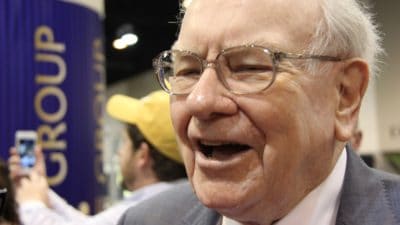
It’s Britain’s third biggest supermarket chain. It’s also, in my view, dangerously close to losing its very identity.
Kantar Worldpanel — a consumer research firm — recently revealed that Sainsbury’s (LSE: SBRY) (NASDAQOTH: JSAIY.US)’s market share slipped from 16.6% to 16.2%. That’s not the end of the world, but it’s not a good sign. Indeed what management would prefer you didn’t know is that there appears to be no end in sight to this slide in its market position.
It doesn’t add up
Sainsbury’s’s latest official accounts show the supermarket chain suffered a slump in quarterly sales. In fact shares in the company fell to a six-year low on that news. Like-for-like sales, excluding fuel, fell 2.8%. That was the third consecutive quarterly sales fall.
Sainsbury’s’s management are saying everyone needs to calm down. Executives are saying, yes, times are tough, but they’re doing everything they can to bring down costs and streamline the retailer’s operations. And that’s true, the company’s made operational cost savings of around £120 million over the past 12 months. In fact that has offset the impact of cost-push inflation during the year.
There’s just one problem: overall costs of sales keep rising. Costs came in around £22.02 billion in the 2013 financial year and rose to £22.56 billion in the last financial year.
Investors are feeling it
So what’s the effect of that ongoing squeeze? Investors are losing money. This year Sainsbury’s reported a dividend of £0.17. City analysts are now forecasting dividends of £0.14 GBP for next year. In that 12-month period alone, shareholders also suffered through a 38% dive in Sainsbury’s stock market valuation.
The truth will set you free, or will it?
We all know the problem by now. British consumers (still shell-shocked by the Great Recession) are choosing more thrifty ways of obtaining their weekly grocery needs. This plays very well into the business models of the discount retailers Aldi, Lidl and Asda. In fact Aldi and Lidl are currently enjoying double-digit growth.
This wouldn’t be such a big problem if it was a short-term phenomenon, but that’s becoming less and less likely — largely because of inflation. That’s not saying prices will remain low, but more an indication that wages and asset prices will remain subdued — and therefore the purchasing power of consumers will remain hindered.
How to make a bad situation worse
News of Sainsbury’s’s latest attempt to evolve did the media rounds earlier this week. The supermarket chain says from the 11th of April 2015 it will be halving the number of Nectar reward points it offers members of its loyalty scheme. From that point onwards customers will earn only one point for every pound spent in store or online, compared with two at points at the moment.
So a quick re-cap, Sainsbury’s is losing market share, its costs are rising, and now it’s shedding the one distinctive tool Tesco and Wm. Morrison Supermarkets (LSE: MRW) use to compete with the new and scary discount chains.
And yes, you heard me right, Morrisons has said it will now launch its own loyalty scheme, called “Match & More”. It’s now promised to match prices with Aldi and Lidl. I respect Morrison’s courage! Especially considering the scheme is predicted to see the company’s profits halve initially. Morrisons is just hoping to knock a little bit of the wind out of the discounters’ sails. It’s still adamant though that it’s not heading towards becoming a discounter.
Sainsbury’s’s needs to go one way or the other: compete with the big discounters, or move up-market. Within itself too it seems to be compromising its own values. One newspaper picked up on a slice of social media that took a bit of a jab at the grocery chain’s latest move: Anna McNally said, ‘So @sainsburys will no longer be giving me nectar points for reusing my bags but will be giving out extra points on fuel. Sounds very green.’.
How can you win the race if you’re not even sure which lane you’re in?







